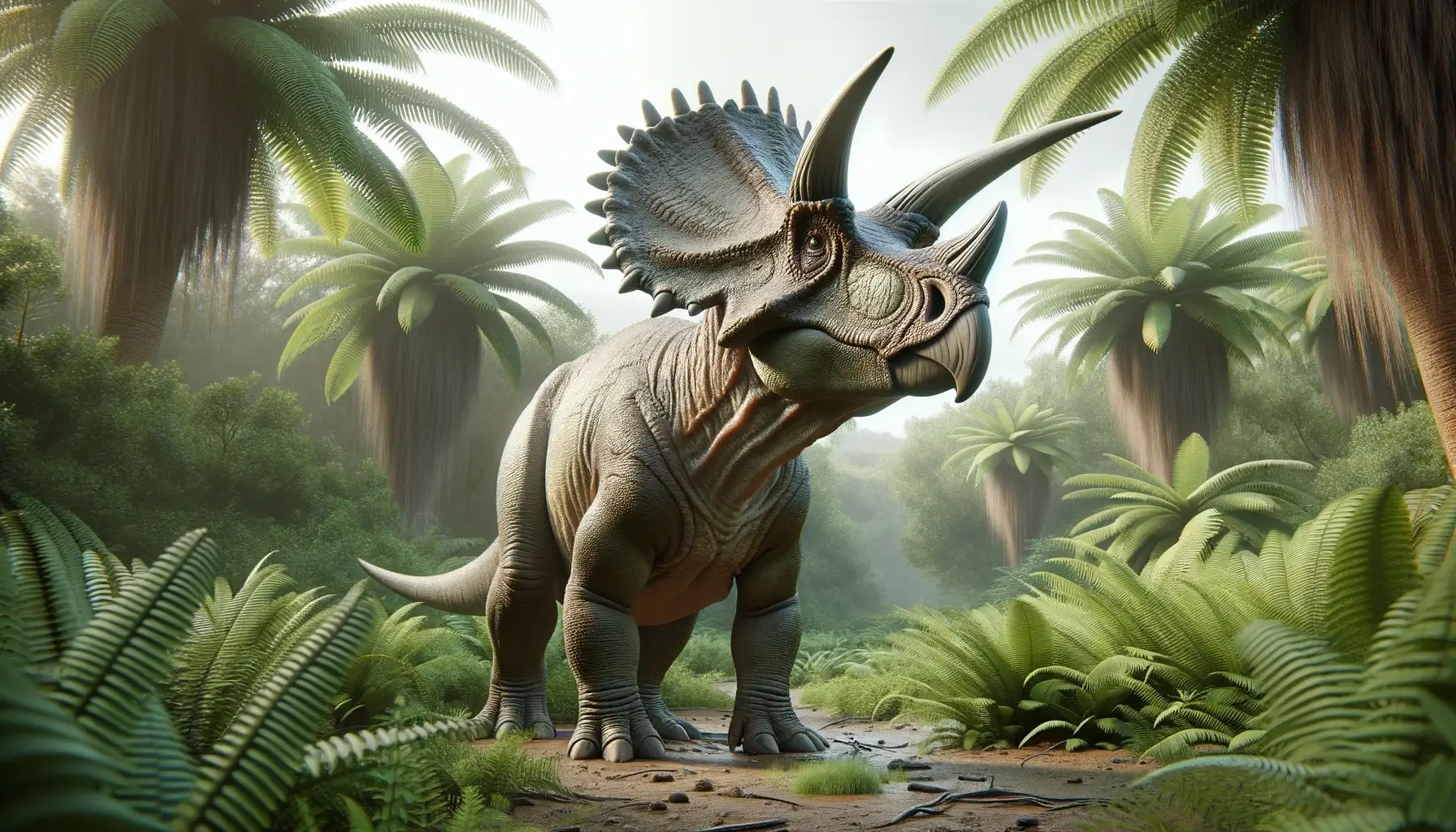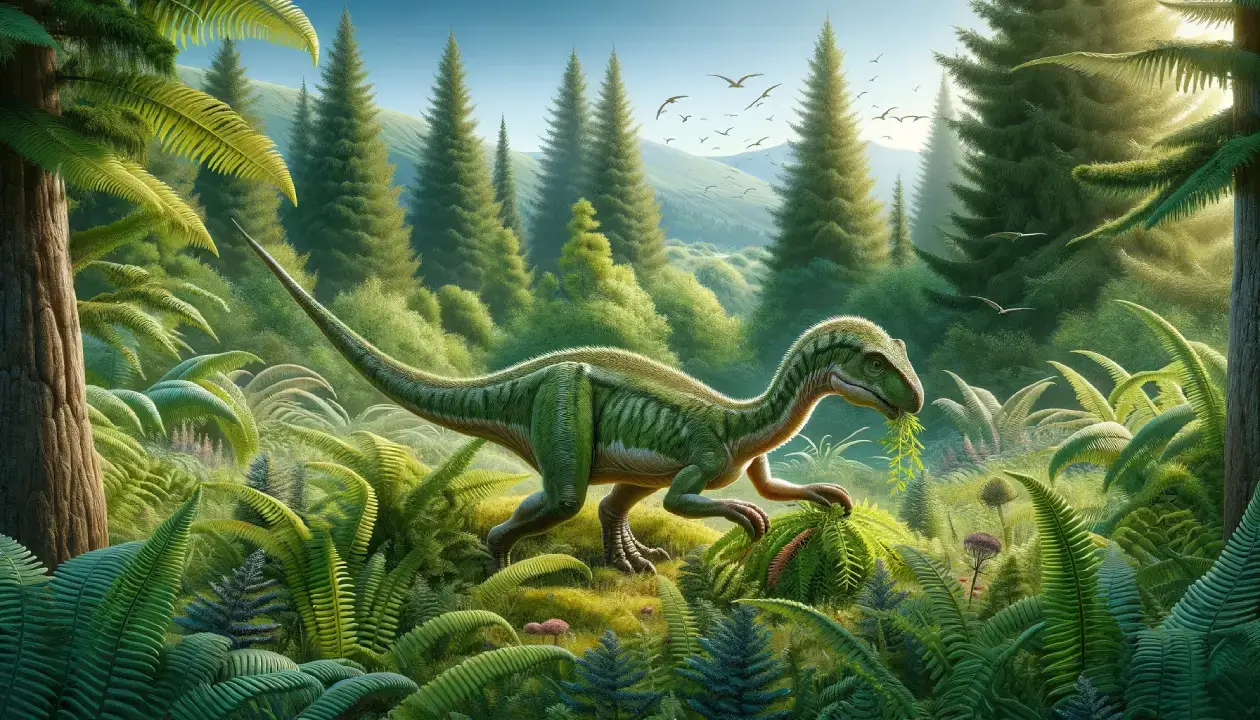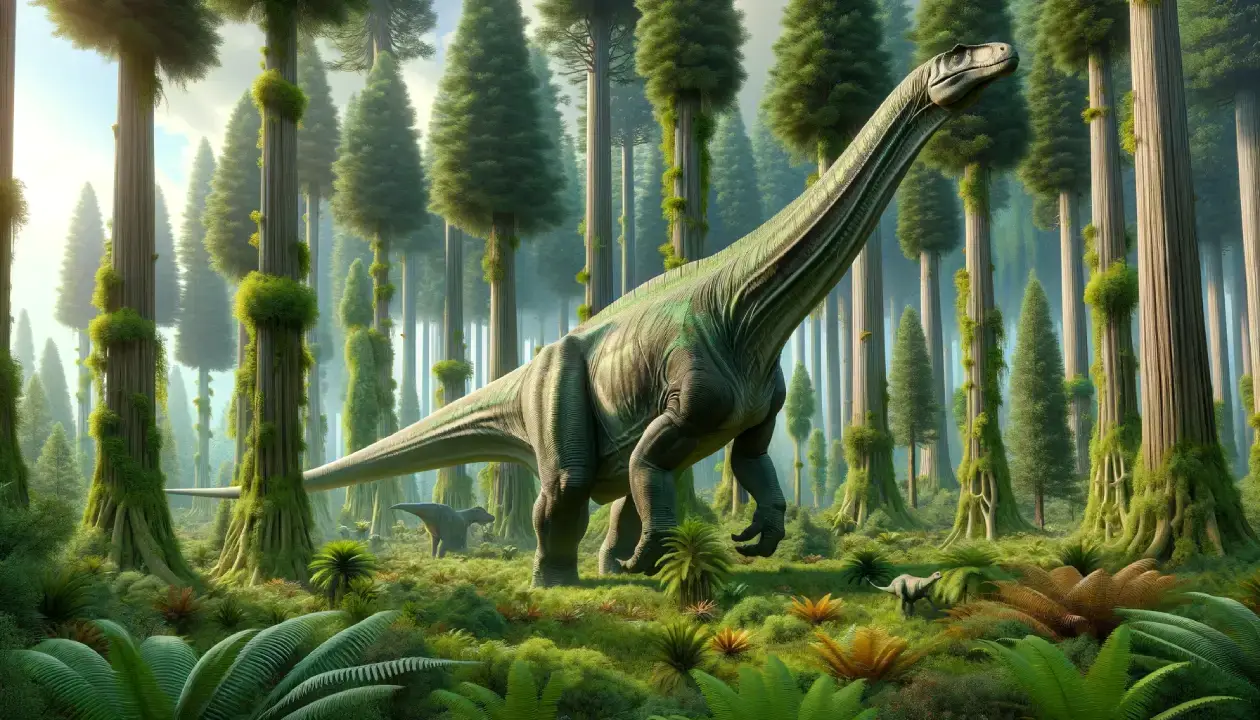Arrhinoceratops was an unusual horned dinosaur that lived in what is now Canada during the Late Cretaceous period, about 83 to 66 million years ago. It was one of the first dinosaurs to be discovered near the Aral Sea, and its name means “no nose-horn face”. It had a large, triangular frill on its head and a pair of long horns over its eyes, but no horn on its nose. It was related to the famous Triceratops, but had a more slender and elongated skull.
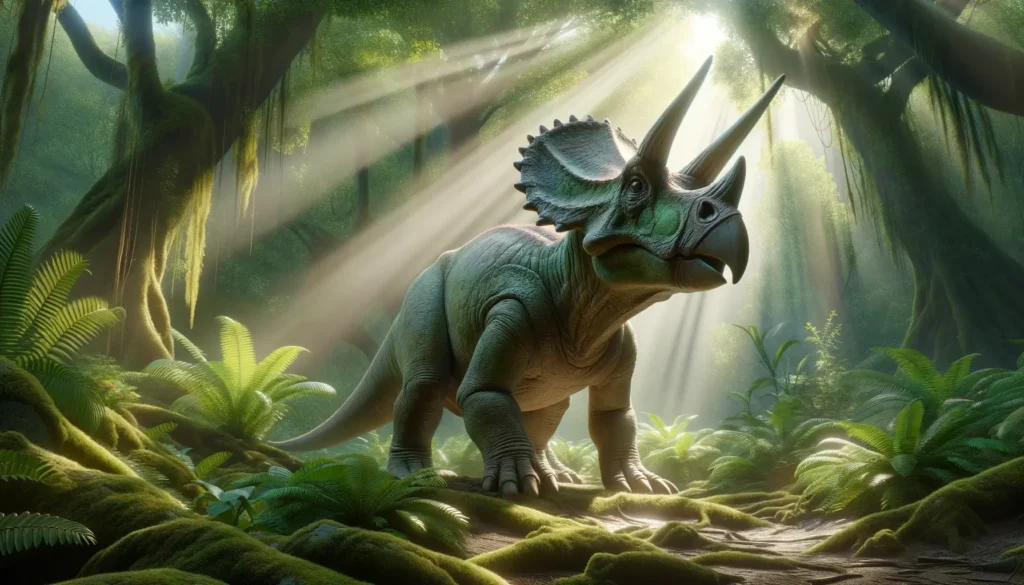
Basic Information
| Feature | Details |
| Time Period | Late Cretaceous (70.6-70 million years ago) |
| Diet | Herbivore |
| Length | 4 meters (13 feet) |
| Weight | 1-2 metric tons (1.1-2.2 short tons) |
| Size | Small |
| Posture | Bipedal |
| Locations | Canada, USA |
| Continent | North America |
| Type | Ceratopsians |
| Habitats | Grasslands, Floodplains |
Description of Arrhinoceratops
Historical Context
Arrhinoceratops was the first dinosaur to be discovered and named in Canada, in 1925 by William Arthur Parks. It was found on a farm near the Red Deer River in Alberta by a farmer named Guillermo Heredia in 1923. He initially thought he had found some fossilized wood, but later realized it was a bone of a horned dinosaur. A scientific excavation of the site was conducted in 1925, yielding a partially crushed skull that lacked the lower jaws. Additional specimens include parts of the skull and the forelimb from Alberta and Utah. Arrhinoceratops was one of the earliest members of the Chasmosaurinae, a group of ceratopsid dinosaurs that had large frills on their heads. It may have been related to other chasmosaurines from North America and Asia.
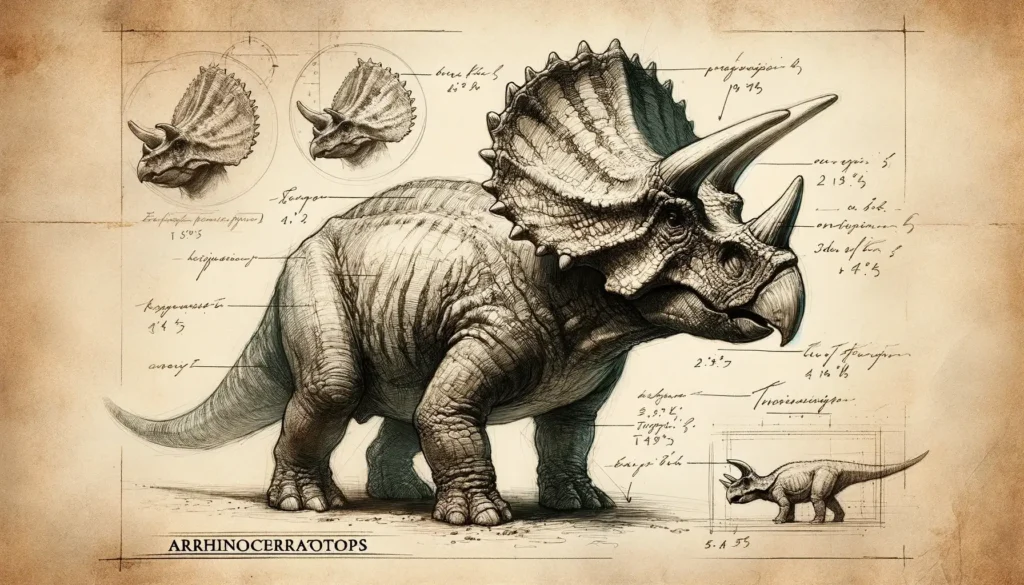
Physical Attributes
Arrhinoceratops was a small herbivorous dinosaur that belonged to the group of ceratopsians, which were characterized by their beaked mouths and horned faces. Arrhinoceratops had a low-slung body with short legs and a long tail. Its head was wide and flat, with small eyes and nostrils that faced sideways rather than forward. Its jaws were covered with a horny beak and had small, peg-like teeth for cropping plants. Its most distinctive feature was its frill, which was located far in front of the eyes and rose sharply from the nasal bone like a triangle. The frill had two oval-shaped openings and was decorated with about nine osteoderms on each side. The rear edge of the frill was lightly scalloped. Arrhinoceratops also had a pair of large horns over its eyes, similar to those of Triceratops.
Feeding Habits
Arrhinoceratops was a herbivore that fed on low-growing plants such as ferns, cycads, and horsetails. It had a broad muzzle that allowed it to take large bites of vegetation. It did not have complex teeth for chewing, so it swallowed its food whole or with minimal processing. It had a large gut that could digest tough plant matter with the help of symbiotic bacteria. Arrhinoceratops may have used its frill to communicate with other members of its herd or to warn off predators.
Unique Features
Arrhinoceratops had several unique features that distinguished it from other ceratopsians and dinosaurs. One of them was its size, which was smaller than most other chasmosaurines. It reached a length of 4 meters (13 feet) and a weight of 1-2 metric tons (1.1-2.2 short tons). Another unique feature was its frill, which was different from the more elaborate frills of other chasmosaurines. The frill of Arrhinoceratops was simple and triangular, and did not extend over the eyes or the back of the head.
Movement and Speed
Arrhinoceratops was not a fast or agile dinosaur. It walked on two legs and had a low center of gravity, which made it stable but also limited its mobility. It could not turn quickly or run for long distances. Its top speed has been estimated to be around 10 km/h (6 mph), similar to a human walking pace. However, it could make sudden movements when necessary, such as raising its head or swinging its tail.
Cultural Impact
Arrhinoceratops has not been featured in many books, movies, games, or toys as a popular dinosaur. It is often overshadowed by other ceratopsians such as Triceratops, Chasmosaurus, or Styracosaurus. However, some examples of its appearances in popular culture are Dinosaur King (2007-2009), a Japanese anime series where it is one of the main characters’ dinosaurs, and Jurassic World Evolution (2018), a video game where it is one of the unlockable dinosaurs.
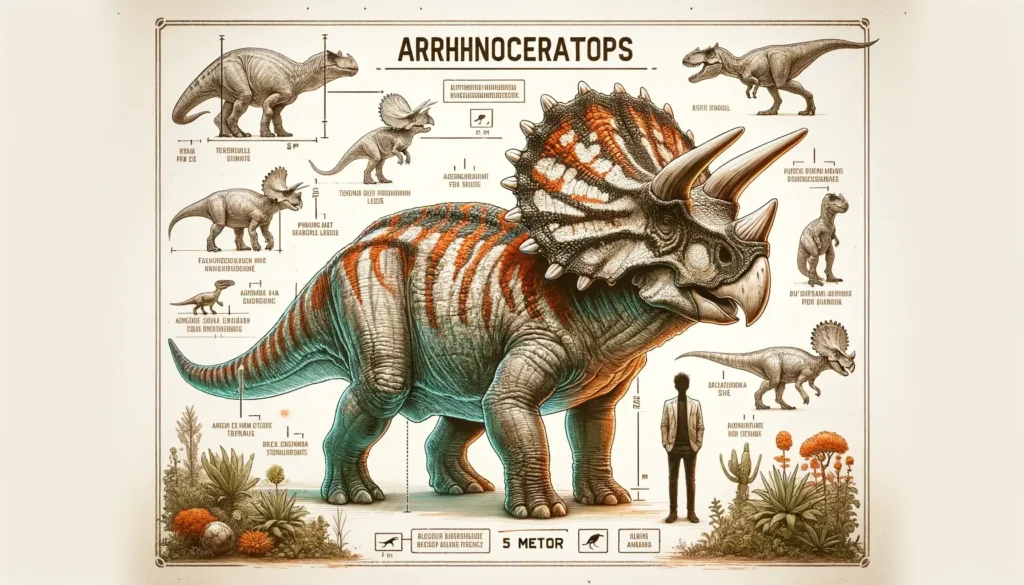
Interesting Facts
- Arrhinoceratops was the first dinosaur to be discovered and named in Canada, in 1925.
- Arrhinoceratops lived about 70.6 to 70 million years ago, during the early Maastrichtian age, and are now known from fossils in the Horseshoe Canyon Formation of Alberta and the Kaiparowits Formation of Utah.
- Arrhinoceratops was one of the earliest members of the Chasmosaurinae, a group of ceratopsid dinosaurs that had large frills on their heads.
- Arrhinoceratops had a simple and triangular frill that rose sharply from the nasal bone like a bump.
- Arrhinoceratops had a pair of large horns over its eyes, similar to those of Triceratops.
Related Dinosaurs
- Triceratops: A close relative of Arrhinoceratops that had a larger frill and three horns on its face, often considered the nemesis of the T-Rex.
- Chasmosaurus: Another close relative of Arrhinoceratops that had a longer frill and smaller horns on its face, and lived in Canada.
- Pentaceratops: A more distant relative of Arrhinoceratops that had a massive frill and five horns on its face, and lived in North America.

